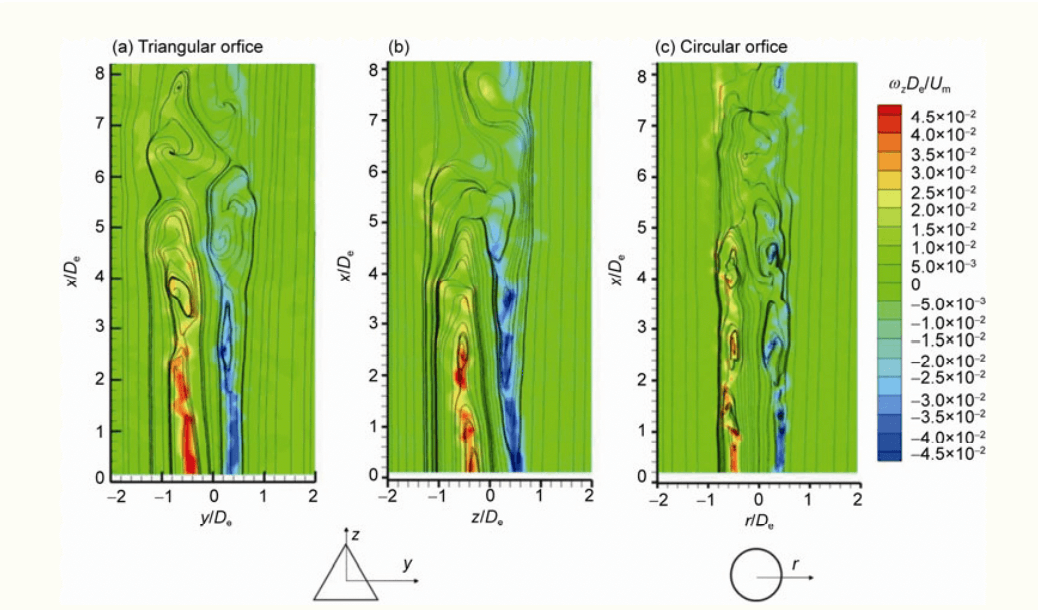Abstract
The present study experimentally investigated the near-field flow mixing characteristics of two turbulent jets issuing from equilateral triangular and circular orifice plates into effectively unbounded surroundings, respectively. Planar particle image velocimetry (PIV) was applied to measure the velocity field at the same Reynolds number of Re=50,000, where Re = U e D e/ν with U e being the exit bulk velocity and ν the kinematic viscosity of fluid, D e the equivalent diameters. The instantaneous velocity, mean velocity, Reynolds stresses were obtained. From the mean velocity field, the centreline velocity decay rate and half-velocity width were derived. Comparing the mixing characteristics of the two jets, it is found that the triangular jet has a faster mixing rate than the circular counterpart. The triangular jet entrainments with the ambient fluid at a higher rate in the near field. This is evidenced by a shorter unmixed core, faster Reynolds stress and centreline turbulence intensity growth. The primary coherent structures in the near field are found to break down more rapidly in the triangular jet as compared to the circular jet. Over the entire measurement region, the triangular jet maintained a higher rate of decay and spread. Moreover, all components of Reynolds stress of the triangular jet appear to reach their peaks earlier, and then decay more rapidly than those of the circular jet. In addition, the axis-switching phenomenon is observed in the triangular jet.

